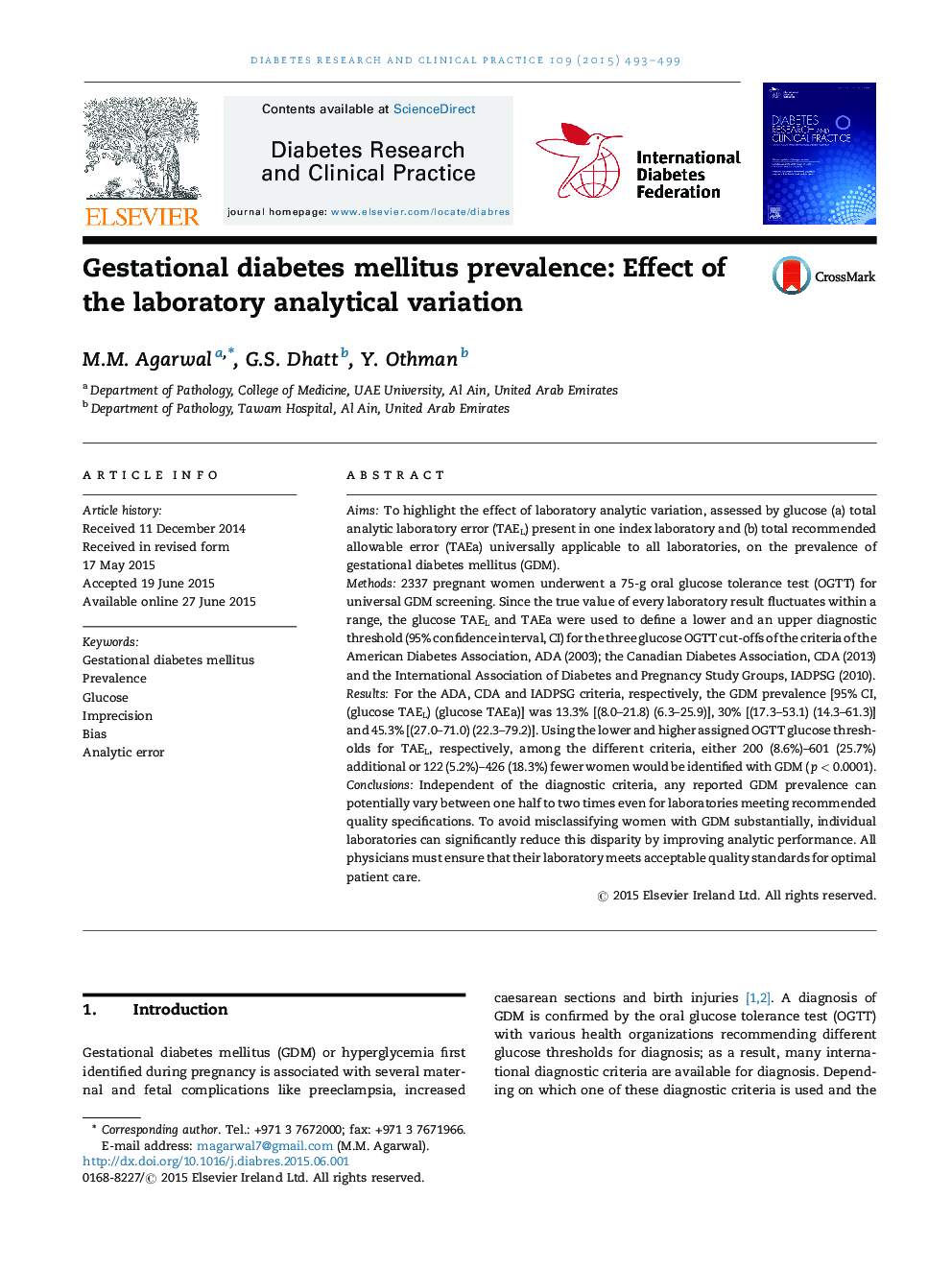| کد مقاله | کد نشریه | سال انتشار | مقاله انگلیسی | نسخه تمام متن |
|---|---|---|---|---|
| 2796225 | 1155589 | 2015 | 7 صفحه PDF | دانلود رایگان |
• The quality of laboratory results has a major impact on the prevalence of gestational diabetes mellitus (GDM).
• Any reported GDM prevalence can potentially vary between one half to two times.
• Laboratories can significantly reduce misclassification of women with GDM by improving glucose imprecision and bias.
• Health professionals must ensure that their laboratory meets acceptable quality standards for optimal patient care.
AimsTo highlight the effect of laboratory analytic variation, assessed by glucose (a) total analytic laboratory error (TAEL) present in one index laboratory and (b) total recommended allowable error (TAEa) universally applicable to all laboratories, on the prevalence of gestational diabetes mellitus (GDM).Methods2337 pregnant women underwent a 75-g oral glucose tolerance test (OGTT) for universal GDM screening. Since the true value of every laboratory result fluctuates within a range, the glucose TAEL and TAEa were used to define a lower and an upper diagnostic threshold (95% confidence interval, CI) for the three glucose OGTT cut-offs of the criteria of the American Diabetes Association, ADA (2003); the Canadian Diabetes Association, CDA (2013) and the International Association of Diabetes and Pregnancy Study Groups, IADPSG (2010).ResultsFor the ADA, CDA and IADPSG criteria, respectively, the GDM prevalence [95% CI, (glucose TAEL) (glucose TAEa)] was 13.3% [(8.0–21.8) (6.3–25.9)], 30% [(17.3–53.1) (14.3–61.3)] and 45.3% [(27.0–71.0) (22.3–79.2)]. Using the lower and higher assigned OGTT glucose thresholds for TAEL, respectively, among the different criteria, either 200 (8.6%)–601 (25.7%) additional or 122 (5.2%)–426 (18.3%) fewer women would be identified with GDM (p < 0.0001).ConclusionsIndependent of the diagnostic criteria, any reported GDM prevalence can potentially vary between one half to two times even for laboratories meeting recommended quality specifications. To avoid misclassifying women with GDM substantially, individual laboratories can significantly reduce this disparity by improving analytic performance. All physicians must ensure that their laboratory meets acceptable quality standards for optimal patient care.
Journal: Diabetes Research and Clinical Practice - Volume 109, Issue 3, September 2015, Pages 493–499
